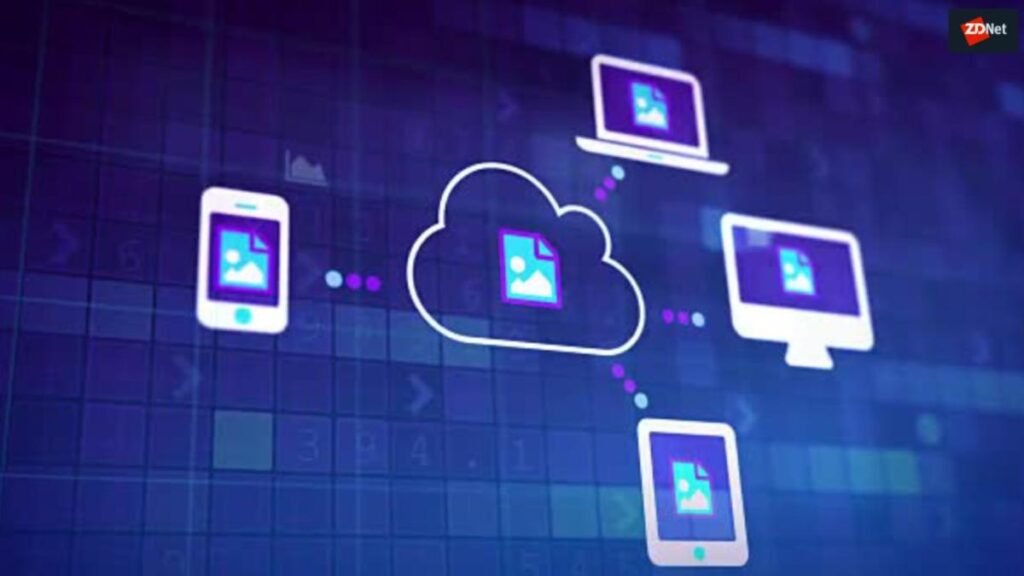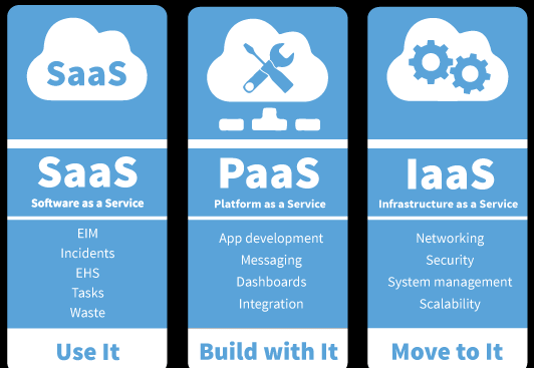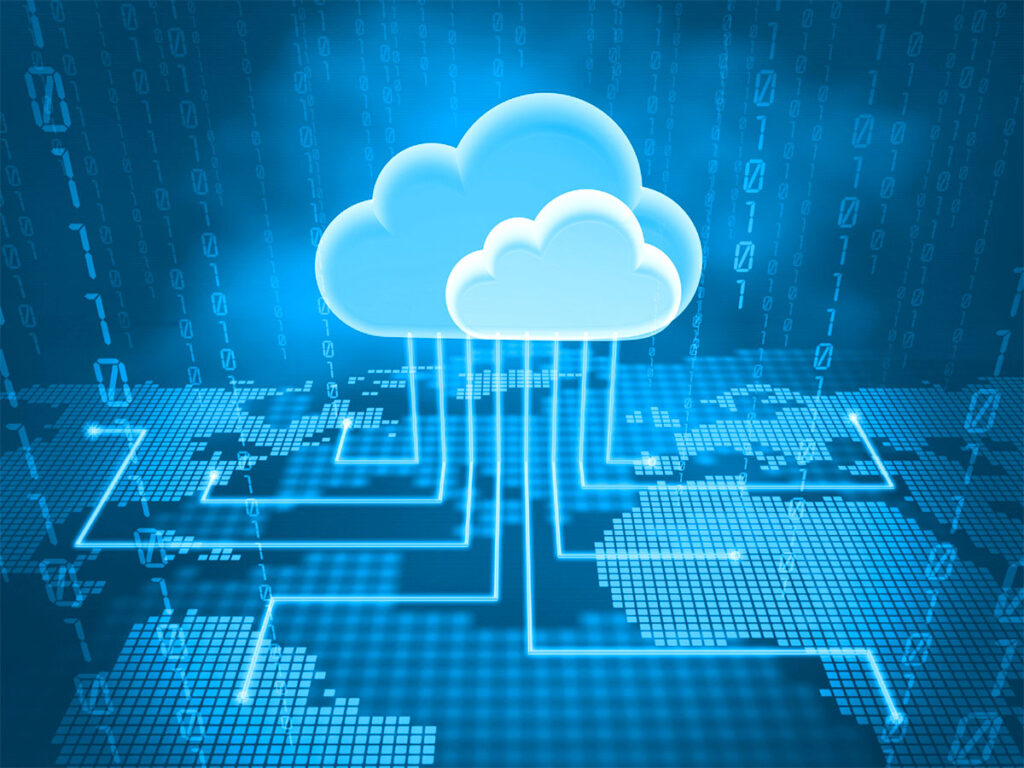Cloud computing’s dynamic features lay the foundation for new higher-level services. These services can help agile and DevOps teams not only complement, but also supply essential services.
Cloud computing services
*Infrastructure as a service (IaaS)
Infrastructure as a service, or “IaaS,” refers to a cloud provider’s online infrastructure that clients can use to store data and develop and operate whatever applications they choose. As a result, IaaS enables businesses to migrate their existing applications and data to the cloud while also shutting down their own local servers and data centers. Infrastructure as a service (IaaS) is a basic cloud service layer that allows businesses to rent IT infrastructure from a cloud provider, such as servers, storage, networks, and operating systems. Users can reserve and provide resources from raw physical server warehouses using IaaS. Users may also reserve per-configured computers for specific activities like as load balancers, databases, email servers, and distributed queues using IaaS. DevOps teams can utilize IaaS as the foundation for building a DevOps toolchain, which can include a variety of third-party technologies.
Platforms run on computing infrastructure, and platforms run on computing infrastructure.
So, while the Microsoft Word application runs on the Microsoft Windows platform, the Microsoft Windows platform itself operates on an IBM-compatible PC’s infrastructure. The server is the most basic component of cloud computing architecture. Cloud computing servers are essentially machines that can run internet programs and store data.
Cloud servers might be real or virtual when provided by an IaaS provider. Individual physical computers, called as blades, are installed within equipment racks in a data center to form real or “dedicated” servers.
Virtual servers, or “virtual server instances,” on the other hand, are software-controlled slices of real, physical servers.
Virtual servers are built through the virtualization technique, which allows several users to share the computing capacity of a single physical server.

Virtual server instances and dedicated physical servers can both execute the same tasks.However, there are some significant distinctions between them. For starters, virtual server instances are less expensive to provide because they do not require their own physical hardware in a cloud data center. On the other hand, individuals who do not wish to share server hardware with other customers may consider virtual server instances to be less safe. As a result, there are four different types of IaaS. “Private clouds,” “dedicated hosting,” “hybrid hosting,” and “cloud hosting” are some of the terms used to describe these services.
*Platform as a service (PaaS)
PaaS makes use of IaaS to automatically assign resources for a language-based tech stack. Ruby On Rails, Java Spring MVC, MEAN, and JAM stacks are all popular language technology stacks. Customers that use PaaS may simply submit an artifact of their application code, which is then immediately deployed to the PaaS’ infrastructure. This is a unique and powerful process that allows teams to focus solely on their business application code, without having to worry about hosting or infrastructure. The PaaS manages infrastructure scaling and monitoring automatically to increase or reduce resources in response to observed traffic demands.
A platform is a software environment in which applications are created for perform particular tasks.
Microsoft Word, for example, is a Windows-based application. When consumers use platform as a service, or ‘PaaS,’ they have access to a cloud computing vendor’s online platform. They can then build and offer their own online (SaaS) applications on top of this platform. PaaS-based applications can be utilized privately by one or a few people within a corporation. They can, however, be provided to anyone on the internet for free or for a cost. This means that if you have a fantastic idea for a new web application, PaaS can help you make it happen. PaaS solutions are now available from a number of cloud providers. Google App Engine, Microsoft Azure, and the Salesforce Platform are among the most well-known of these. All of these services effectively hand over a box of cloud computing Legos to their consumers. The plastic bricks available are then used to create new applications. Even a simple drag-and-drop interface can be used to create some applications. As a result, even those who aren’t extremely tech-savvy can easily develop new internet applications.
While PaaS is beneficial in many instances, users must be aware of the trade-off between flexibility and power.
While PaaS makes it very simple to construct new online apps, customers are still limited by the programming languages and tools offered by their PaaS provider. To put it another way, PaaS vendors have complete control over which Lego bricks their clients are allowed to use in their creations. While this guarantees that apps created with the available tools will always work, it is still limited. Many businesses and individuals opt for cloud computing at the infrastructure level for this reason.

*Software as a service (SaaS)
Software as a service (SaaS) delivers software applications over the internet, on-demand and typically by subscription. The cloud providers host and manage the application, addressing software upgrades and security patching as needed. Examples of SaaS are CRM systems, webmail applications, productivity tools like Jira and Confluence, analytics tools, monitoring tools, chat applications, and more. Computer applications are accessed through the Internet rather than being installed on a local computing device or at a local data center in software as a service. People may utilize an online word processor such as Google Docs, an online photo editor such as Pixlr, or an online invoicing application such as Zoho Invoice, for example. Many SaaS programs, at least at first, are free to use.
Many advantages can be gained by using SaaS. These include the benefits of dynamic scalability and device freedom that come with cloud computing, as well as the flexibility to use an application without paying fixed fees.
Collaboration is a feature of many SaaS products. This allows several people to collaborate on documents and even work on them simultaneously. In the Google Sheets spreadsheet, for example, many users can operate on various cells at the same time. Cells that are being worked on by various users are locked and highlighted in distinct colors.
To improve collaboration, a real-time chat window can be opened alongside the spreadsheet.
Watch the now-classic movie Google Docs English for further information on collaborative working with Google’s cloud computing products. To take collaboration even further, the outputs of some SaaS applications can be embedded as web service gadgets in other web sites. A Google Sheets or Zoho Sheet graphic, for example, can be mashed into another webpage.
When the data in the online spreadsheet that is creating it changes, it will immediately update.
Users can avoid the “upgrade hell” of a big traditional software package change by using SaaS apps, which are regularly updated.
The drawback of SaaS is that it is essentially a take-it-or-leave-it cloud computing model. This means that SaaS is inaccessible to enterprises and people who want direct access to cloud computing hardware to run their own apps.
Rather, they must use platform as a service (PaaS) or infrastructure as a service (IaaS) to cloud compute at the platform or infrastructure level (IaaS).
*Function as a service (FaaS)
As a service provider
(FaaS) is a cloud computing service that provides users with a platform for developing, deploying, and managing applications.This eliminates the requirement for developers to create and manage the infrastructure required to construct and launch an app. Cloud providers make cloud resources available, run a block of code, display the result, and then delete the resources which were used.

Consult Benchmark IT services for your cloud platform concerns and queries now.

